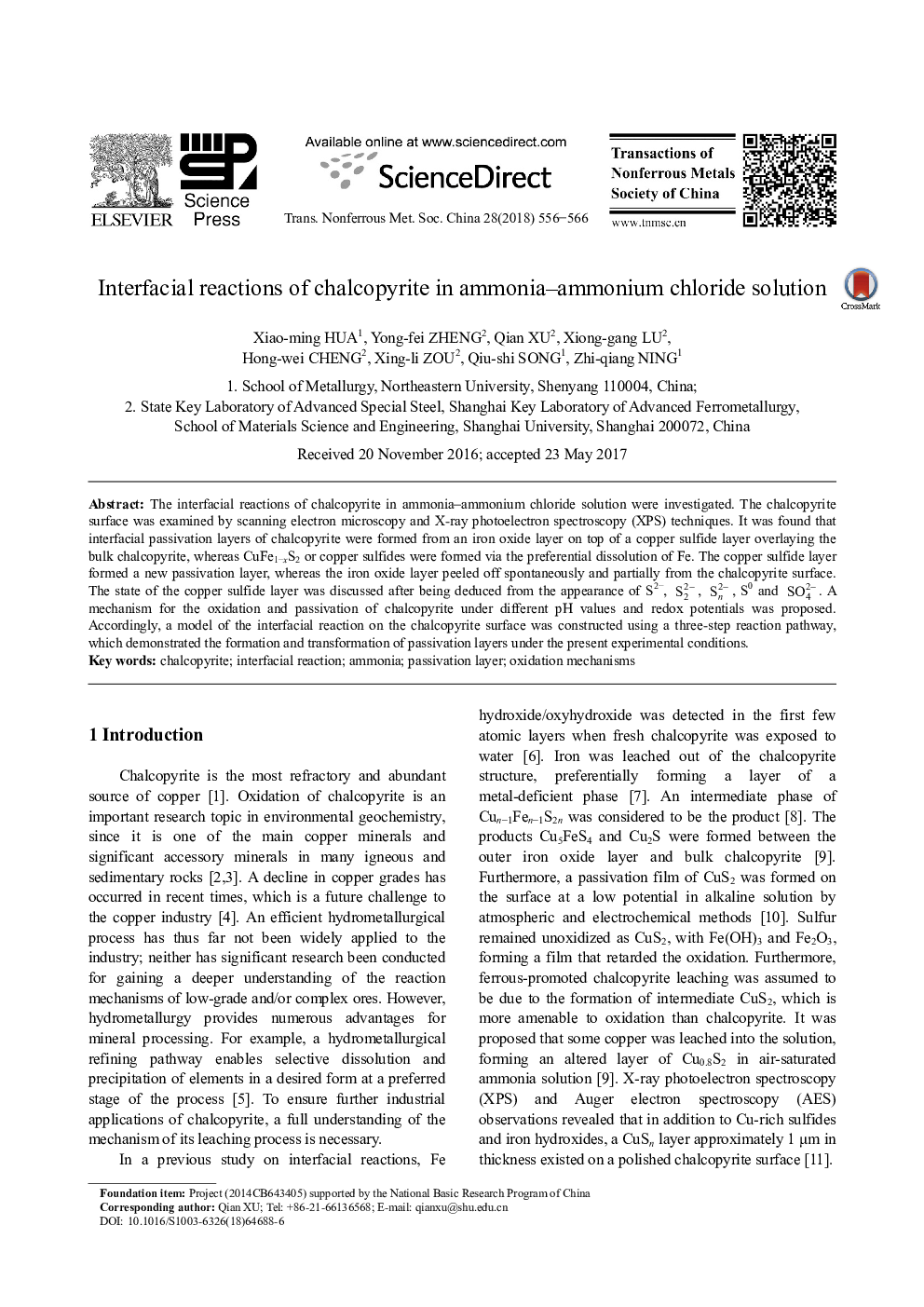| Article ID | Journal | Published Year | Pages | File Type |
|---|---|---|---|---|
| 8011699 | Transactions of Nonferrous Metals Society of China | 2018 | 11 Pages |
Abstract
The interfacial reactions of chalcopyrite in ammonia-ammonium chloride solution were investigated. The chalcopyrite surface was examined by scanning electron microscopy and X-ray photoelectron spectroscopy (XPS) techniques. It was found that interfacial passivation layers of chalcopyrite were formed from an iron oxide layer on top of a copper sulfide layer overlaying the bulk chalcopyrite, whereas CuFe1-xS2 or copper sulfides were formed via the preferential dissolution of Fe. The copper sulfide layer formed a new passivation layer, whereas the iron oxide layer peeled off spontaneously and partially from the chalcopyrite surface. The state of the copper sulfide layer was discussed after being deduced from the appearance of S2-, S2â2, S2ân, S0 and SO2â4. A mechanism for the oxidation and passivation of chalcopyrite under different pH values and redox potentials was proposed. Accordingly, a model of the interfacial reaction on the chalcopyrite surface was constructed using a three-step reaction pathway, which demonstrated the formation and transformation of passivation layers under the present experimental conditions.
Related Topics
Physical Sciences and Engineering
Materials Science
Metals and Alloys
Authors
Xiao-ming HUA, Yong-fei ZHENG, Qian XU, Xiong-gang LU, Hong-wei CHENG, Xing-li ZOU, Qiu-shi SONG, Zhi-qiang NING,
